Rapid innovation in the mobility sector could drastically reduce driving, the need for parking, and expanded roadways.
Parking in a New Mobility Future: Getting More for Our Transportation Investments
Cities are already behind in planning for the new mobility future. Local governments need to be considering these strategies now to make sure these technologies optimize community and environmental benefits.
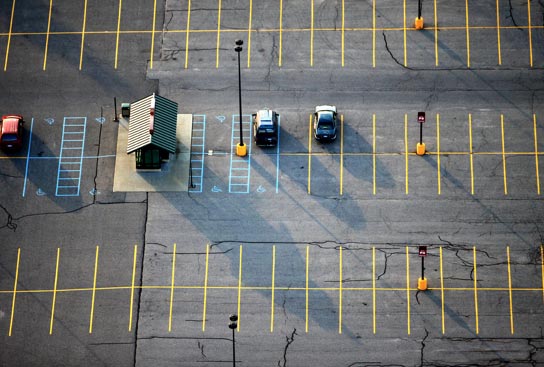
Thinking of building more parking or widening your roads? Think again.
Rapid innovation in the mobility sector could drastically reduce driving, the need for parking, and expanded roadways.
MIT scientists found that if the trend toward ride-sharing keeps accelerating, traffic congestion could be reduced by 37% and the number of vehicles on the road decreased by 19% (assuming half of drivers shifted over to ridesharing). Some studies also estimate that autonomous vehicles could erase the need for up to 90% of our current parking lots in the next 15 years.
Given our substantial national infrastructure deficit ($3.2 trillion through 2020), local governments would be wise to consider optimizing and improving current transportation infrastructure before making investments in new streets and parking to support mobility needs that are rapidly changing.
Cities should also be considering ways to “optimize” the cars that are already on the road. The average automobile spends 95% of its time sitting in place – an average of 23 hours a day. And when our cars are in motion, 80% of seats on the road are currently empty. Not to mention the 5.5 billion hours that are wasted by Americans each year due to road congestion
At What Cost?
It would take an estimated $533 billion to expand roadways and relieve severe congestion in U.S. urban areas.
Accommodating all these vehicles also comes at a significant cost to our physical and natural environments in the form of large portions of our urban cores dedicated to housing cars (not people), increased development costs which are passed on to residents or customers, and increased air pollution.
A 2011 University of California-Berkeley study found that the United States has roughly four times more parking spaces than vehicles. If you totaled up all the area devoted to parking, it would be roughly 6,500 square miles, bigger than the state of Connecticut. In fact thirty one percent of our downtown commercial cores are devoted to parking.
Parking is expensive to build and maintain, and it can increase the cost of projects in existing developed areas by 10% to 20%. Those costs are passed on to tenants (on top of any monthly per-space fee the landlord charges) – padding rent by an average of $225 a month nationwide – even for those who don’t own cars.
Todd Litman of the Victoria Transport Policy Institute has modeled a typical affordable housing development and concluded that including one parking space per dwelling unit raises the cost of each apartment by 12.5%, while a second parking space doubles that to 25%.
Reduced Demand
Changing demographics and rapid innovation in the mobility sector paired with growing frustration over commute times have combined to cause dramatic shifts in car use:
- The pace of car use has been slowing. In the 1960s, car use grew by 42%. In the 1980s, it grew by less – only 23%. Then, from 1995 to 2005, it grew by only 5%. In some cities, car use actually declined, including Atlanta (10.1%) and Houston (15.2%).
- People have maxed out their commute distance. Cesare Marchetti observed that, throughout history, the majority of people disliked commuting more than one hour to work. If faced with a longer commute, people hit a wall (deemed the “Marchetti Wall”) and rearranged their life, finding a new, more local job or moving closer to the office.
- Millennials are increasingly turning away from the car. The average annual number of miles driven by American 16- to 34-year-olds dropped 23% between 2001 and 2009. Meanwhile, Millennials took 24% more bike rides and used more public transit.
- Carsharing and ridesharing are increasing exponentially. The number of carshare vehicles has risen in the U.S. from less than 700 in 2003 to more than 19,000 in 2014 (Shaheen and Cohen, 2014) – a nearly three-fold jump. A year ago, Uber reported that its drivers were making 1 million trips per day; this past summer, the company told prospective investors that it was growing 300 percent year over year.
The most significant disruption in mobility, though, will likely come from autonomous vehicles.
Designing for Self-Driving Cars
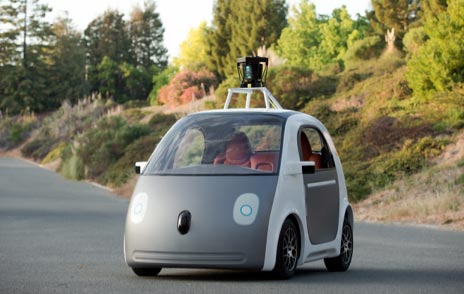
Google’s self-driving cars have already driven a total of 1.2 million miles, including weaving through traffic in Silicon Valley, Austin and Pittsburgh. Google plans to make autonomous vehicles available to the public in 2020.
Experts predict that they’ll probably emerge en masse about 10 years from now and will likely be electric. Berkeley Lab scientist Jeffrey Greenblatt estimated that emissions would be 90% lower if cars were all autonomous and electric.
The other critical key to aligning the growth of self-driving cars with smart-growth goals is in fleet deployment versus private ownership.
There is precedent: Lyft has been operating their Lyft Line carpool service for about a year and a half, and it already makes up more than 50% of its rides in San Francisco; and 90% of Lyft rides have someone else taking the same trip within five minutes (highlighting a potential for increased carpooling). General Motors recently invested $500M in Lyft to provide self-driving ride share cars and Uber is already researching and developing their own self-driving cars.
University of Texas-Austin transportation engineering professor Kara Kockelman modeled the impact of autonomous ride-sharing vehicles and found that each one could replace up to a dozen regular cars.

Shared autonomous cars would likely have a dramatically lower environmental footprint due to the reduced need for parking space (up to 90%) along with reductions in congestion and pollution caused by circling the block looking for parking.
But that is just one scenario – if these cars make driving more attractive (giving riders the ability to work or sleep for example) and a large share are privately owned – self-driving cars could spark demand, prompting commutes of such lengths that are currently untenable.
Governments should be considering policies now that make fleet-based ridesharing more appealing than individual car ownership and take into account changing parking and transportation infrastructure needs.
Surge Parking Pricing
Parking guru Donald Shoup says the goal is to price parking so that there are always one or two spots open on a block. Doing so gets rid of circling since drivers could always quickly find a spot, which reduces emissions and traffic and encourages transit ridership by increasing parking costs.
In 2011, the City of San Francisco set up new high-tech meters and ground sensors in several parts of downtown to tell how busy these blocks and City parking lots were. Over the next two years, the City shifted parking costs upward on 37% of the time segments per blocks or lots, while at another 37%, the prices dropped.
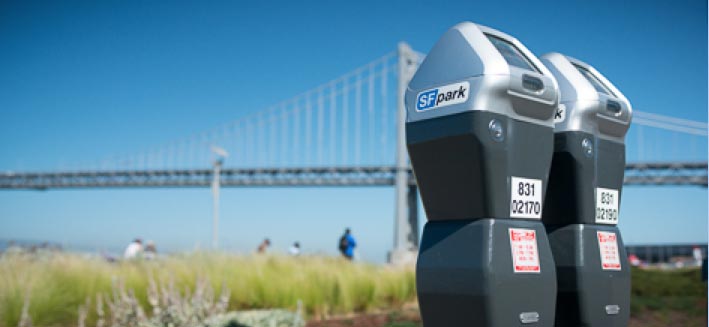
Overall, driving in the pilot areas went down by about 2,400 miles per day – and circling dropped by 50%. Correspondingly, that helped reduce greenhouse gas emissions by 30%. Meanwhile, drivers reported that it took them 43% less time to find parking.
And the program was even profitable: The City took in $3.3 million more at the meters, even as it lost $500,000 from declining parking citations.
One way to get business owners and citizens on board with potentially contentious parking pricing strategies, according to Shoup, is to provide a hyperlocal benefit, such as street improvements. For example, Ventura County found success by installing smart meters that were connected to the City by wifi, and then using those meters to broadcast free wifi to local residents and businesses.
Reduce or Eliminate Minimum Parking Requirements
The central policy that can discourage the growth of parking is to eliminate minimum parking requirements. Los Angeles eased their parking rules in 1999 to encourage redevelopment in their downtown core and in a short time, developers started renovating the old buildings, providing an average of only 1.3 parking spots per unit (versus the two spots previously required).
Under a new law (AB 744, Chau) passed last year, if a developer of specific housing types (affordable, mixed-income and senior housing near transit) asks to be allowed to build less parking than required by zoning regulations, a city has to allow it, unless it can demonstrate that more parking is necessary.
Congestion Pricing
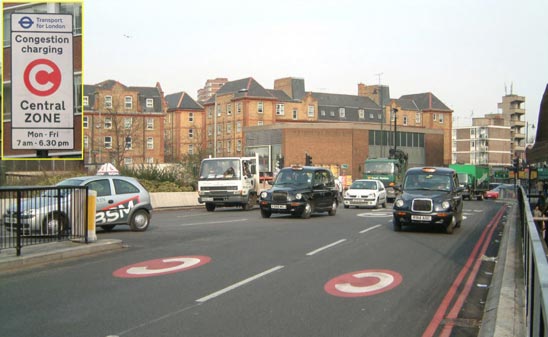
Cities can require drivers to pay extra fees to travel in the congested downtown areas unless they are in ride-shared vehicles. London’s program saw a 30% reduction in congestion in the first years, substantial increase in transit usage and bicycling, fewer traffic fatalities and substantial revenue ($222 million in 2008, the majority of which went into improving bus service).
Incentives for Ridesharing
Cities could also offer incentives to support priority rides (in underserved neighborhoods or connections to transit) in exchange for important data on ridership which ride sharing companies have been resistant to release. Already, more than 20% of Lyft rides in the San Francisco Bay Area start or end near a BART or Caltrain stop. Uber reports that, in some cities, one-third of its trips begin or end at a public transit station.
City Fleets of Self-Driving Cars
Cities could deploy their own fleets of subsidized self-driving cars and focus on disabled residents and those underserved by existing transit and car sharing services. Cities could commission vans that could serve more people acting as a micro-transit that provides more environmental benefits than personal vehicle ownership and more flexibility than a bus.
The bottom line: cities are already behind in planning for the new mobility future. Local governments need to be considering these strategies now to make sure these technologies optimize community and environmental benefits.
Imagine all the parks, parklets and affordable housing that could be built if we took back 90% of our current parking spaces!
This article drew heavily from a great Mother Jones’ article, “No Parking Here” (January-February 2016), by Clive Thompson.
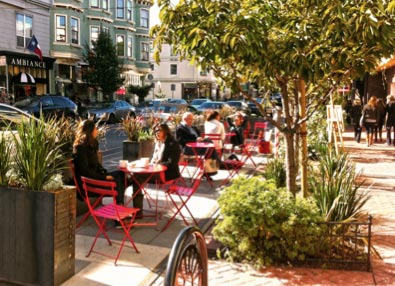
Local Government Commission Newsletters
Livable Places Update
CURRENTS Newsletter
CivicSpark™ Newsletter
LGC Newsletters
Keep up to date with LGC’s newsletters!
Livable Places Update – April
April’s article: Microtransit: Right-Sizing Transportation to Improve Community Mobility
Currents: Spring 2019
Currents provides readers with current information on energy issues affecting local governments in California.
CivicSpark Newsletter – March
This monthly CivicSpark newsletter features updates on CivicSpark projects and highlights.



